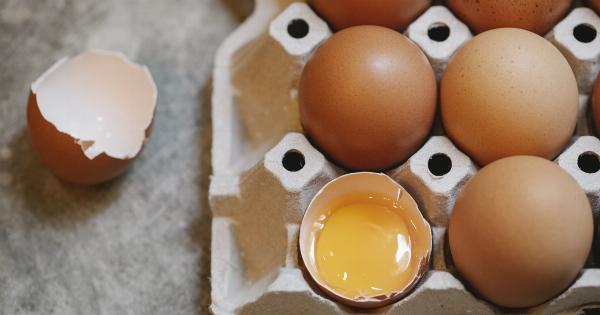Glaucoma is a common eye condition that can cause blindness if left untreated. It is caused by pressure building up in the eye, which damages the retina and optic nerve.
While there are many factors that can contribute to glaucoma, recent research has shown that diet can also play a role in the development and progression of this condition.
What is Glaucoma and What Causes It?
Glaucoma is a group of eye conditions that mainly affect people over the age of 60. It is caused by an increase in the pressure within the eye, also known as intraocular pressure (IOP).
The pressure builds up because of a fluid called aqueous humor that circulates within the eye. This fluid is produced by the ciliary body, a structure in the eye that is responsible for regulating the pressure. If the fluid doesn’t drain properly, it can build up and cause the pressure to increase.
The increased pressure can damage the optic nerve, which is a bundle of nerve fibers that transmits signals from the eye to the brain. When the nerve is damaged, it can lead to vision loss, which can be permanent if left untreated.
Glaucoma is a leading cause of blindness worldwide, and it is estimated that around 3 million Americans have this condition.
How Diet Affects Glaucoma
While the exact causes of glaucoma are still not known, recent research has shown that diet can play a role in the development and progression of this condition.
A diet that is high in fat, salt, and sugar has been found to increase the risk of glaucoma. On the other hand, a diet that is rich in fruits, vegetables, and omega-3 fatty acids can help to lower the risk.
Foods to Avoid
Several studies have linked a high intake of fat, salt, and sugar with an increased risk of glaucoma.
A diet that is high in saturated fat, for example, can impair blood flow to the retina and optic nerve, which can increase the risk of damage and vision loss. Similarly, a diet that is high in salt can increase fluid retention in the body, which can increase the pressure within the eye.
Finally, a diet that is high in sugar can lead to inflammation and damage to the blood vessels, which can impair the flow of nutrients to the eye.
Foods that should be avoided or limited include:
- Fried and fatty foods
- Processed foods
- Salty snacks
- Sugar-sweetened drinks and desserts
- Alcohol and caffeine
Foods to Eat
On the other hand, a diet that is rich in fruits, vegetables, and omega-3 fatty acids can help to reduce the risk of glaucoma. These foods are high in antioxidants, which can protect the eye from damage caused by free radicals. They can also improve blood flow to the eye and reduce inflammation, which can help to maintain the health of the optic nerve and retina.
Foods that should be included in the diet include:.
- Fruits (especially berries, citrus fruits, and kiwis)
- Vegetables (especially leafy greens, carrots, and bell peppers)
- Whole grains (such as brown rice, quinoa, and oats)
- Legumes (such as chickpeas, lentils, and beans)
- Nuts and seeds (such as almonds, walnuts, and chia seeds)
- Fatty fish (such as salmon and tuna)
- Herbs and spices (such as turmeric and ginger)
Conclusion
While there is no known cure for glaucoma, a healthy diet can help to reduce the risk of developing this condition and slow its progression.
A diet that is rich in fruits, vegetables, and omega-3 fatty acids can improve blood flow to the eye, reduce inflammation, and protect the optic nerve and retina from damage. On the other hand, a diet that is high in fat, salt, and sugar can increase the risk of glaucoma and should be avoided.































